La Grande Mademoiselle, le Duc de Lauzun and the woes of love…
Aging stoic woman, who happens to be the richest heiress in all of Europe, meets egoistic court buffoon and falls in love with him… what could possibly go wrong?
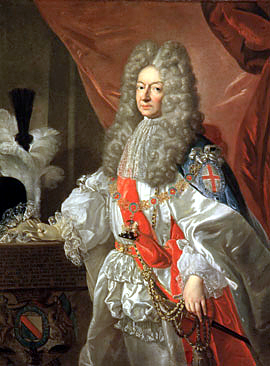
La Grande Mademoiselle, cousin to Louis XIV, who has refused one marriage proposal after the next, while those she had in mind herself did not work out, met Antoine Nompar de Caumont at court after a brief exile for refusing a marriage offer made by the King. This Antoine Nompar de Caumont was then known as the Marquis de Puyguilhem, but I shall call him here by the title he was granted in 1692, that of Duc de Lauzun… for the simple reason that the name Lauzun, compared to Puyguilhem, is the one most commonly used when talking of this gentleman.
Lauzun, born in 1633, was sent to his cousin the Duc de Gramont in his youth in order to learn the art of warring. While doing that, he often frequented the salon of the Comtesse de Soissons, who happened to be good friends with the King. At some point, Louis XIV noticed Lauzun along with it his freedom of mind and insolence. For some reason, only the King knows why, this Lauzun made a bit of an impression to the young Louis XIV and became something like a favourite to him.
Years later, at the start of the 1670’s, Monsieur de Lauzun had earned himself the reputation of a libertine, sometimes charming, but mostly rude, very daring, even with the King, a jester that loves to play tricks on others and a bit of a buffoon. Then one day, according to Saint-Simon, Monsieur de Lauzun had the audacity to hide under the bed of Madame de Montespan, while she received a visit from the King, in order to find out why the King had not granted him an office which has been promised to him. Finding out that it was Madame de Montespan behind it, he proceeded to call her all sorts of names, no polite ones, and confronted the King with the matter. Louis XIV got so angry over Lauzun’s new display of audacity, which involved breaking his sword over his knee and not so polite words directed at the King, that he threw his cane out of the window… in order to resit the temptation to hit Lauzun with it. All of that brought Lauzun a stay at the not so comfy Bastille.
Shorty after as he was allowed to return to court, and somewhat restored the friendship with Louis XIV, the King’s cousin la Grande Mademoiselle was allowed to return to court as well. While there were not many gentlemen who liked the bold Lauzun, the female courtiers were quite enamoured with… although he was not the handsomest:
“He is a small man, but nobody can deny that he has a most pleasing and upright figure. His legs are well turned; his hair is scanty, fair, but tinged with grey, badly brushed and often greasy; he has fine blue eyes, which are generally bloodshot; a distinguished air and a pleasing expression. His smile is charming. The tip of his nose is pointed and red…. He is very slovenly in his dress; when he takes pains he looks very well. There is the man!”

This description of Lauzun comes directly from the pen of la Grande Mademoiselle… who fell head over heels for him. And before he even really got hint of that, she had already decided he would become her hubby. She was close to fifty then, he ten years younger.
What did not occur to Mademoiselle was that this Lauzun might not be interested in her, at least not in the way she was interested. She was the grande dame of the court after all and her money could buy him anything he desired.
After shyly ogling him from afar and exchanging fleeting words now and then, Lauzun however noticed that there was a certain interest in his person… one that could be of use to him. Thus a sort of friendship formed between the two of them, which Lauzun was not too eager in as Mademoiselle writes: “I don’t know,” she wrote, “whether he saw what was in my heart. I was dying to give him a chance of saying what his own felt for me, but I didn’t know how to manage it.”
Poor Mademoiselle, in love like she was, became desperate for a tender glance, a brushing of fingers, some affectionate words…. anything that could confirm for her Lauzun was fond of her…. but she got nothing of the sort.
Thus she decided to make him jealous: “I led him to a window; his proud bearing made him for me the emperor of all the world. I began: You have shown me such real friendship of late that I intend to do nothing without your advice… People are saying that the king intends to marry me to the Prince of Lorraine. Have you heard anything about it?”
Whatever reaction Mademoiselle had hoped for, Lauzun dissapointed her again. Instead of inquiring about that Prince, or possible marriage, or begging her not to do it, he did nothing.
And so, Mademoiselle continued. She mentioned it again and again, casually so, adding at some point that she had made her mind up and decided to marry… but refusing to name the groom. Again, Lauzun did not fall on his knees to swear everlasting love, he approved of her decision to marry instead he gave her some advice: “Nothing,” he said, ‘”is so ludicrous as an old maid of forty who dresses and enjoys herself like a thoughtless girl of fifteen. At that age a woman should enter a convent or turn devote, or at least dress modestly and give up frivolities. Vespers, sermons, the poor, and the sick should be her distractions. Unless, of course, she marries… For then she will dress like the others to please her husband, and go to balls because he wishes her to do as everybody else does.”
Things between Mademoiselle and Lauzun did not really progress much, until Madame suddenly died and Louis XIV suggested Mademoiselle should take her place. She was shocked, after all she wanted to marry Lauzun, and turned pale white. Lauzun on the other hand, unbeknown to Mademoiselle very aware of her feelings towards him, became rather frightened. If it was the King’s wish to marry Mademoiselle to Monsieur and she refused because of him, it would probably ruin his friendship with the King and Monsieur. Thus he forbade Mademoiselle to see or speak with him.
Louis XIV saw that Mademoiselle was not at all interested, however, and refused to force her to marry his brother against her will. The danger being over, Mademoiselle decided to take matters into her own hands, before something like it could happen again. Lauzun still had not said the three sweet words she was so desperate to hear, but she would get him to do it. In this decision she was just as firm as in her refusal to marry Monsieur.
Again, Lauzun was of no help in the matter, for he refused to be told the name of the man she was in love with… At last, after much ado, he agreed that she should write the name on a bit of paper and bring it to their rendezvous in the Queen’s Apartment. Mademoiselle did just that: “I produced the paper, on which there was a single word but one which meant so much, and showed it him; then I put it back, first into my pocket and afterwards into my muff. He urged me to give it to him and said that his heart was beating; before giving it to him I said: You must answer on the same sheet.” What happened next was the very thing Mademoiselle had waited for so long. Lauzun, seeing his own name on the paper, decided to go along, for it might be to his advantage after all, and took the matter a step further. He told her to write the King regarding a marriage.
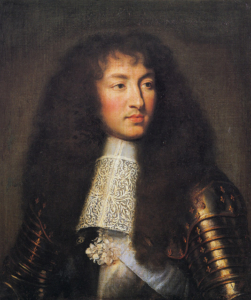
Mademoiselle’s heart skipped a beat. Could it really be? Oui. Lauzun wished to marry her. Finally. To waste no time, he could cancel the whole thing after all, she wrote to the King at once… and to her, and Lauzun’s surprise, Louis XIV actually agreed. He gave his consent and made it public that Mademoiselle, his cousin, would marry.
What a happy turn of events….. or not. As soon as the matter was made public, there was a proper rebellion at court. Everyone was outraged, especially the Princes du Sang. Monsieur and the Queen said they will under no circumstance sign the marriages contract or approve of the wedding of one of their own, a member of the royal family, to someone who was nearly a no-one. Such a match was scandalous and beneath Mademoiselle, a grand-child of Henri IV. Her father being the brother of the late Louis XIII. She must be joking. How could she marry that man? Someone who spent time in the Bastille, on top of it. Non. It can not be. Even the Parisians were of that opinion.
In the meantime, as the protest reached their ears, bride and groom were urged by friends to take advantage of the King’s agreement and to marry at once, before he might change his mind…. but surely he would not do that, would he? Lauzun wasn’t too sure anymore. He dismissed the idea in first, wanting to marry in style with grand ceremony and even grander fete afterwards, but the atmosphere started to become slightly hostile towards his person… thus he apparently agreed to be wedded in secret to Mademoiselle at a house of a friend.
Alas, he made his mind up too late. Madame de Montespan, who was pro the marriage in first, started to fear it might reflect badly upon her and could be to her disadvantage. She went to her royal lover and informed him of her growing concerns, the talk at court, the angry Princes du Sang, and how some saw Mademoiselle as a hysterical old maiden that had lost all good sense. The King could not possibly let this marriage happen without it reflecting badly on him as well…
Louis XIV changed his mind and withdrew his permission. On the eve of her planned wedding, at 8 o’clock in the evening, la Grande Mademoiselle was summoned to the Tuileries and shown in by a private door into the King’s room: “I found the king alone, much moved, and sad. He said to me: ‘I am in despair about what I have to say to you. I have been told that I was sacrificing you to make the fortune of M. de Lauzun, that this would produce an unfavourable impression abroad, and that I ought not to allow the match to be concluded. You have good cause to complain of me. Beat me if you like: there is no mark of indignation which I do not deserve from you and to which I will not submit.’ Ah ! Sire, I cried, “what are you saying! How cruel! He threw himself on his knees; I did the same, and for three-quarters of an hour we remained clasped in one another’s arms, his cheek resting against mine: he wept as freely as myself. ‘Ah, why did you give me time to think ?’ he cried, ‘ why didn’t you make haste?‘”
Plenty of tears followed and Mademoiselle broke the window of her carriage in anger on her way back to the Luxembourg. She locked herself in her room and wallowed freely in her sorrows, receiving visits of condolence, from the King as well. But his mind could not be changed. However, after plenty more tears, he allowed her to see Lauzun whenever she wished. She did so, but not for long, because Lauzun managed to get himself arrested over a dispute with Madame de Montespan and calling her all sorts of names again in public.
Relaxing in his rooms at Saint-Germain, Lauzun suddenly found himself in company of royal guards, which seized him and sent him en route to Pignerol. The very prison where Nicolas Fouquet was locked up for nearly twenty-years already.
Saint-Mars, the governor of the prison, wrote to Louvois as Lauzun was on the way to him: “M. de Nallot… will tell you how I am preparing for M. de Lauzun. He will tell you, Monseigneur, that I shall lodge him in the two rooms below M. Foucquet; they are the same that you saw, with windows guarded on the inside by great bars of iron; my arrangements are such that I can answer for it, on my life, that M. de Lauzun will not be able to escape or receive any communication from outside. I pledge my word of honour, Monseigneur, that you will never hear speak of him, so long as he is in my keeping, any more than if he were dead… The place which I am preparing for him is so situated that I cannot make holes in the wall to watch him; but I intend to know what he does and says, down to the minutest detail, through the valet whom I shall give him. I have procured one with much difficulty, and it is this class of people who are my chief worry, because they don’t like to spend all their lives in prison…” Saint-Mars, however, could not get the valet to spy for him. Monsieur de Lauzun was completely cut off from any communication with the outside world for the next six years. And Mademoiselle in great despair. She visited court whenever she could, hoping her red eyes might achieve Lauzun’s release. Nothing could rip her thoughts from him. Not even the many love letters, from court beauties, that were discovered in his private correspondence upon his arrest, made her love him any less. Just like she was stoic in the decision she would marry him, she was now stoic in her mission to free him… but that wasn’t easy and she had to be patient.

Ten years of red eyes later, the chance was there. Madame de Montespan approached with an idea and in the end Mademoiselle had to sign parts of her fortune over to the Duc du Maine, son of la Montespan and the King. What Mademoiselle did not know as she did just that, was that it would not fully restore Lauzun, as she thought, but merely grant him release from prison and live in exile on her estates.
Lauzun moved to Amboise and Mademoiselle felt rather betrayed. Not just had she thought her beloved would be restored to former glory, but also that the King would give consent for a marriage. Stubborn as she was, she went into attack-mode again. She managed to talk the King into receiving Lauzun at court, so Lauzun may pay his respects and thank the King for his release, after which Lauzun may be allowed to live where he wants, as long as it was not anywhere near to the court. Louis XIV received Lauzun at Versailles and for the first time in ten years, Mademoiselle had a chance to behold her beloved: “He came to me after seeing the king; he had on an old doublet, all torn, and a shocking wig. He threw himself at my feet and did it with a good grace. Then Madame de Montespan took us into her cabinet and said, ‘ You will like to speak to one another alone.’ She went out, and I followed her.”
It reads a little as if Mademoiselle was not entirely happy with the meeting…. but it did not take long until Lauzun had fully charmed herself into her heart again…. and apparently Mademoiselle finally became a Madame, in a secret marriage, of course.
One could think both “lived happily ever after” after all that drama, but far from it. After a couple of happy months, Lauzun began to court the female servants under the very eyes of Mademoiselle. He also showed no gratitude towards her, even-though she made a great sacrifice to free him. One scene followed the next and being fed up by it all, Mademoiselle showed Lauzun to the doors of her chateau they both lived in together.
Lauzun ran back and begged for forgiveness. Mademoiselle granted it, but only if he would cross the gallery of the chateau on his knees, her being on one end of it and he on the other. He managed it and both embraced… again, not for long. More quarrels followed, each one getting more bitter in tone and some of them even ending violently.
In 1684, Lauzun inquired if he may follow the King into war and was refused to do so. Which made him think Mademoiselle might have been involved in it, to get even with him for some argument, and all of it ended in a big argument: “I met him with a smiling face and said, ‘You must go off to Lauzun or Saint-Fargeau; for, as you are not to accompany the king, it would be absurd for you to remain in Paris, and I should be sorry for people to think that I am the cause of your being left behind.’ He said, ‘I am off, and I bid you good-bye for the last time.’ I replied, ‘My life would have been happier if I had never seen you, but better late than never.’ ‘You have ruined me,’ he replied; ‘ you have practically cut my throat; you are responsible for my not accompanying the king; you asked him to refuse me.’ ‘Oh, as for that,’ I said, ‘it’s a lie; he will tell you so himself.’ He grew very angry, and I remained perfectly calm. ‘Good-bye, then,’ I said, and went into my private room. When I came back after a certain time he was still there. … I went up to him, saying, ‘This is too much! Keep to your resolution and begone.’ He withdrew.”
Mademoiselle did not want to see Lauzun again after that. He tried to know at her door several times, but she did not open. As she fell ill, he appeared again and she refused. Then died only a few days later, keeping true to her promise.
Lauzun on the other hand, was on his own again and had to restore his fortune by himself. After Mademoiselle’s demise, he went into grand mourning, as a husband would. Spent some time in France, then went to England, entered the King’s good graces again, got married and became brother-in-law to Saint-Simon, before he eventually passed away in 1723 at ninety years of age. (More about the adventures life of Lauzun coming soon.)
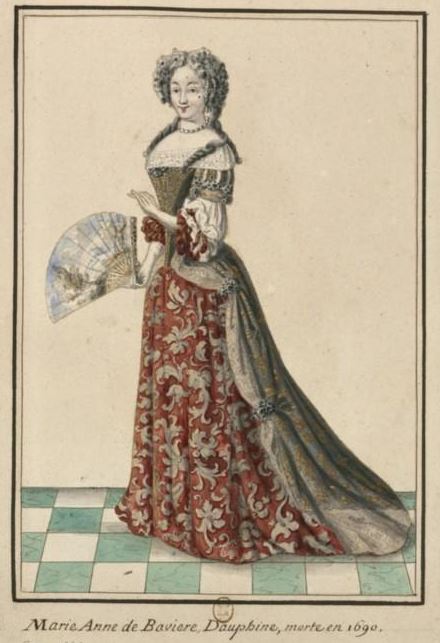

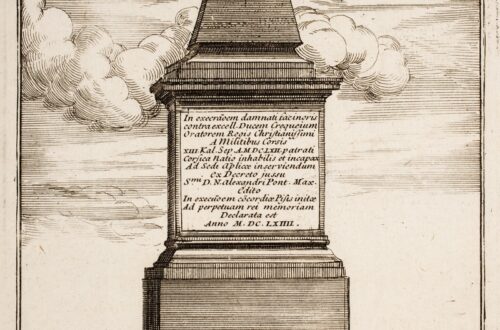

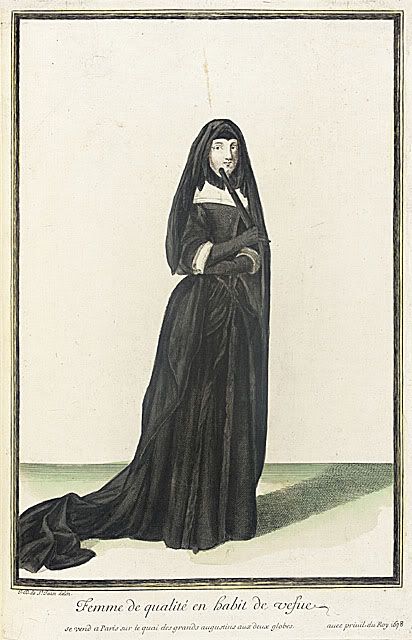
3 Comments
Richard
I am researching Philip Stanhope, 2nd Earl of Chesterfield, his life, his house (Bretby Hall) and the associated famous gardens, which according to Camille d’Hostun de la Baume, duc de Tallard, were second only to Versailles. Philip was well connected with the French court. In 1660 he visited Bourbon for the waters, he had been left at death’s door only a few months earlier from a severe illness whilst still in London. Within his love letters of this year he writes to Madamoiselle de Moulin and to Madamoiselle de Quentin. I can find nothing about either of these ladies and wonder whether you might be able to help? Might you have come across Philip Stanhope in any of your other researches?
Aurora
Hiya Richard. If I read a mention of him, I don’t remember. But I’ve recently read a mention of a Monsieur du/de Moulin, with the position of écuyer ordinaire de la Reine (Marie-Thérèse d’Autriche).
He might be Francois de Moulin and wiki tells me he married Marie-Jeanne de Saint-Quentin, but they apparently only had a son. Since Mademoiselles are usually ‘named’ after their fathers estates, I would make sense for the Mademoiselle to be from the de Moulins de Rochefort family. But this is only a guess. The mention of Monsieur du/de Moulin is in the Gazette of January 1663, it says something about him recently returning from Madrid.
Richard
Thank you Aurora. Every snippet helps!
What exactly was the role of the écuyer ordinaire de la Reine?
It is, I believe, more than a coincidence that the two names in question appear in two of Philip Stanhope’s letters separately next to each other in his Letter Book. Is it known when Francois de Moulin married Marie-Jeanne de Saint-Quentin? If it was in 1660 then we can probably say they are one and the same person.
What do you think?